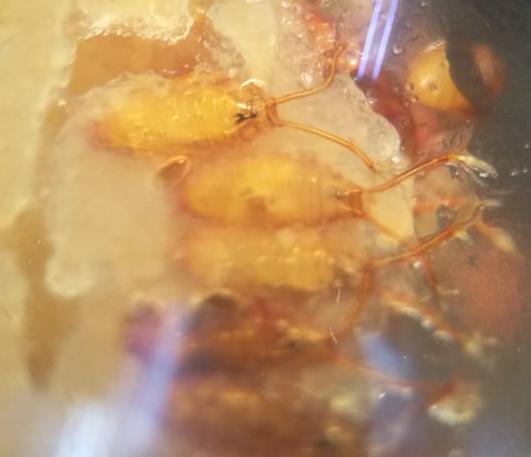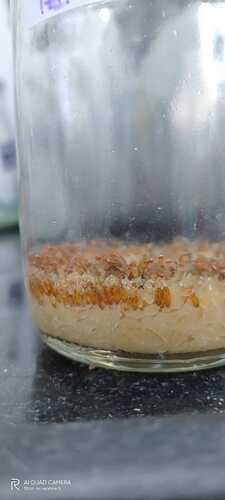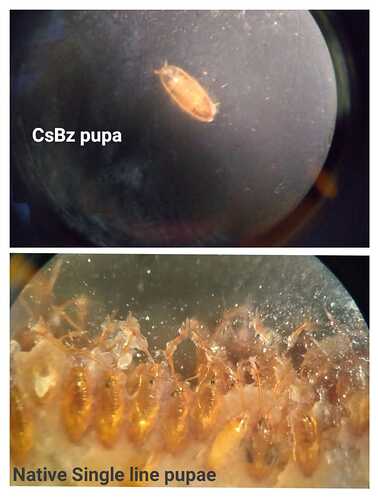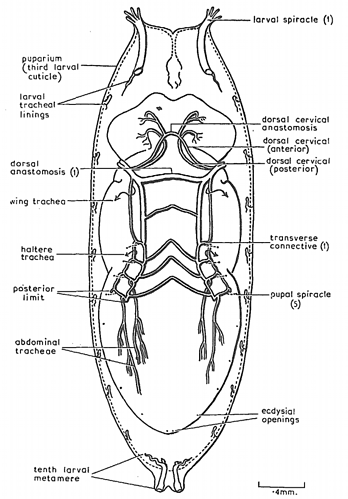Hello everyone!
Some people who know me personally might be wondering that why has a Moina guy (my model organism being that) is writing a post on Drosophila!
So the story traces back to 14 January 2020, Wednesday.
I was there at CUBE HBCSE, Mumbai, just taking a look at the media bottles containing flies when I came across this bottle which had the flies from the Native which means that these flies were trapped from nature.
The flies which I have seen in the lab show two different Geotactic behaviours.
Geotaxis means the motion of the organism in response to the force of gravity.
One is Positive Geotaxis i.e. the flies stay on the ground rather I must say on the media going along the course of gravity.
And the other being Negative Geotaxis which means the flies are found to be on the cotton plug or on the walls of the media bottle which shows that these flies oppose gravity.
And the most common behaviour exhibited by the Native flies is Negative Geotaxis.
So the thing which astonished me as you can see in this bottle is that these were Native flies showing Positive Geotaxis!!
Bottle Details:
Media Date: 28 Dec 2019
Transfer Date: 07 Jan 2020
Bottle name: H2 SL8
Video credits: @Lydia
The bottle on the left (Control): Standard CsBz Drosophila melanogaster flies
The bottle on the right: Native Single Line
Their geotactic behaviour is visible in the above videos
Ok ok
I’m not fooling you guys! ![]()
How can I say that these flies are positively geotactic as there are not much flies visible inside (except 2 which I had seen)??
- The pupae which are normally seen to be on the walls of the bottle were now dug inside the media!
The walls were totally clean!
Unlike the Indians, these pupae must have followed our Honourable PM Modi’s Swatch Bharat Mission!
- Again, we come on to the pupae, their colour was dark and they had long antennae.
Yes, the pupal antennae were unusually long.

Image credits: @Lydia
- When I took a normal Native Single Line Flies bottle as control and then compared them with these, I found their eye colour to be more catchy!! (I forgot to take a photo of the eye of the CsBz fly
 )
)
Catchy in the sense, darker in the colour.
Image Credits: @Lydia
We (@Lydia, @KiranyadavR Ma’am, @yash_sheregare, @Arunan Sir and I) have used the standard CsBz flies as the control mainly.
Image credits: @Lydia
In this, we can clearly see the difference in the size of the antennae and the way in which they are dug inside!
Video credits: @drishtantmkawale
The bottle on 14 January 2020
Video credits: @Lydia
The bottle on 22 January 2020
Video credits: @yash_sheregare
The new media bottle with same flies dated 24 January 2020
Media Date: 18 Jan 2020
Transfer Date: 21 Jan 2020
Bottle name: H3 SL8
Transferred from bottle H2
Transferred by @Lydia
I’ll attach more photos and videos of the same!
Till then, you guys have the responsibility of contributing!
@Arunan Sir, @Lydia, @KiranyadavR Ma’am, @Isha_23, @AditiKale, @TheBN, @yash_sheregare, @hellboy and others CUBists too!



